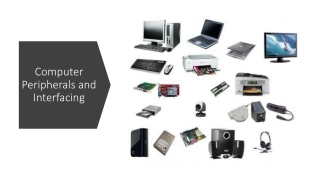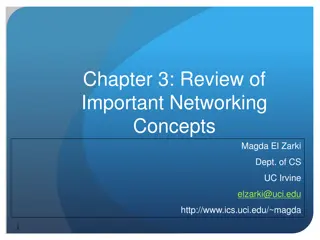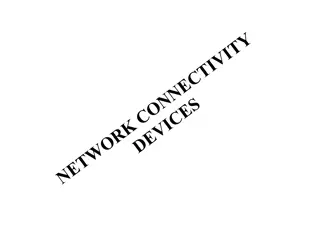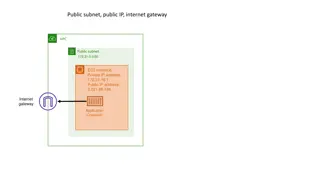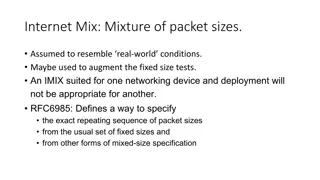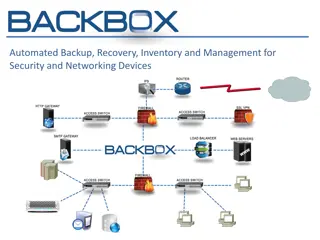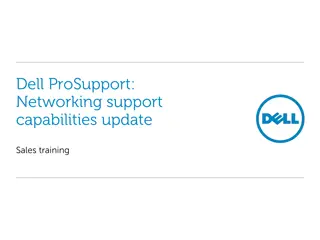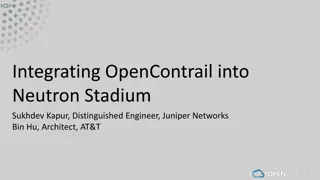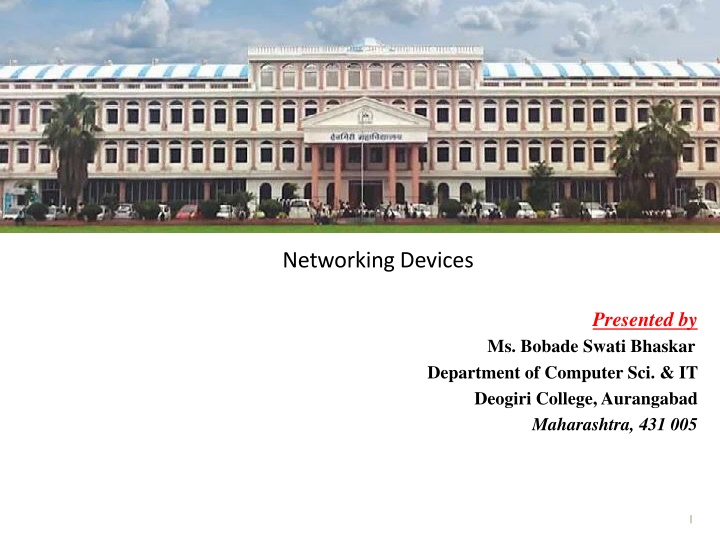
Networking Devices and Connecting Equipment
Explore the world of networking devices and connecting equipment used to link LANs and facilitate communication between devices. Learn about hubs, repeaters, and bridges, and how they function within a network infrastructure. Gain insights into the importance of these devices for maintaining efficient network operations.
Download Presentation

Please find below an Image/Link to download the presentation.
The content on the website is provided AS IS for your information and personal use only. It may not be sold, licensed, or shared on other websites without obtaining consent from the author. If you encounter any issues during the download, it is possible that the publisher has removed the file from their server.
You are allowed to download the files provided on this website for personal or commercial use, subject to the condition that they are used lawfully. All files are the property of their respective owners.
The content on the website is provided AS IS for your information and personal use only. It may not be sold, licensed, or shared on other websites without obtaining consent from the author.
E N D
Presentation Transcript
Networking Devices Presented by Ms. Bobade Swati Bhaskar Department of Computer Sci. & IT Deogiri College, Aurangabad Maharashtra, 431 005 1
Introduction LANs do not normally operate in isolation but they are connected to one another or to the Internet. To connect LANs, connecting devices are needed and various connecting devices are such as bridge, switch, router, hub, repeater.
CONNECTING DEVICES Connecting devices into five different categories based on the layer in which they operate in a network. Five categories of connectingdevices
Hubs A hub is used as a central point of connectionamong media segments. Cables from network devices plug in to the portson the hub. Types of HUBS : A passive hub is just a connector. It connects the wires coming from different branches. The signal pass through a passive hub without regeneration or amplification. Connect several networking cables together Active hubs or Multiport repeaters- They regenerate or amplify the signal before they are retransmitted.
Repeater A repeater is a device that operates only at the PHYSICAL layer. A repeater can be used to increase the length of the network eliminating the effect of attenuation on the signal. It connects two segments of the same network, overcoming the distance limitations of the transmission media. A repeater forwards every frame; it has no filtering capability. A repeater is a regenerator, not an amplifier. Repeaters can connect segments that have the same access method. (CSMA/CD, Token Passing, Polling, etc.) Optic fiber repeater
Repeater connecting two segments of a LAN Function of arepeater
Bridges Operates in both the PHYSICALand the data linklayer. As a PHYSICALlayer device, it regenerates the signal it receives. As a data link layer device, the bridge can check the PHYSICAL/MAC addresses (source and destination) contained in theframe. A bridge has a table used in filteringdecisions. It can check the destination address of a frame and decide if the frame should be forwarded ordropped. If the frame is to be forwarded, the decision mustspecify the port. A bridge has a table that maps address toports. Limit or filter traffic keeping local traffic local yet allow connectivity to other parts(segments).
A bridge connecting twoLANs A bridge does not change the physical (MAC) addresses in a frame.
How Bridges Work Bridges work at the Media Access Control Sub-layerof the OSI model Routing table is built to record the segment no.of address If destination address is in the same segment asthe source address, stoptransmit Otherwise, forward to the othersegment
Characteristics of Bridges RoutingTables Contains one entry per station of network to whichbridge is connected. Is used to determine the network of destination stationof a receivedpacket. Filtering Is used by bridge to allow only those packets destinedto the remotenetwork. Packets are filtered with respect to their destinationand multicastaddresses. Forwarding the process of passing a packet from one networkto another. LearningAlgorithm the process by which the bridge learns how toreach stations on theinternetwork.
Types of Bridges Transparent Bridge Also called learning bridges Build a table of MAC addresses as frames arrive Ethernet networks use transparent bridge Duties of transparent bridge are : Filtering frames, forwarding and blocking Source Routing Bridge Used in Token Ring networks Each station should determine the route to the destination when it wants to send a frame and therefore include the route information in the header of frame. Addresses of these bridges are included in the frame. Frame contains not only the source and destination address but also the bridgeaddresses.
Advantages And DisadvantagesOf Bridges Advantages of using a bridge Extend physical network Reduce network traffic with minor segmentation Creates separate collisiondomains Reduce collisions Connect different architecture Disadvantages of using bridges Slower that repeaters due to filtering Do not filter broadcasts More expensive than repeaters
Two and Three layer switches Two layer switch operate at PHY and data link layer Three layer switch operates at network layer Bridge is an example of two-layer switch. Bridge with few port can connect a few LANs Bridge with many port may be able to allocate a unique port to each station, with each station on its own independent entity. This means no competing traffic (no collision as we saw in Ethernet)
3-layerswitches E.g. router. Routes packets based on their logical addresses (host-to-host addressing) A router normally connects LANs and WANs in the Internet and has a routing table that is used for making decision about the route. The routing tables are normally dynamic and are updated using routing protocols. Routers connecting independent LANsand WANs

